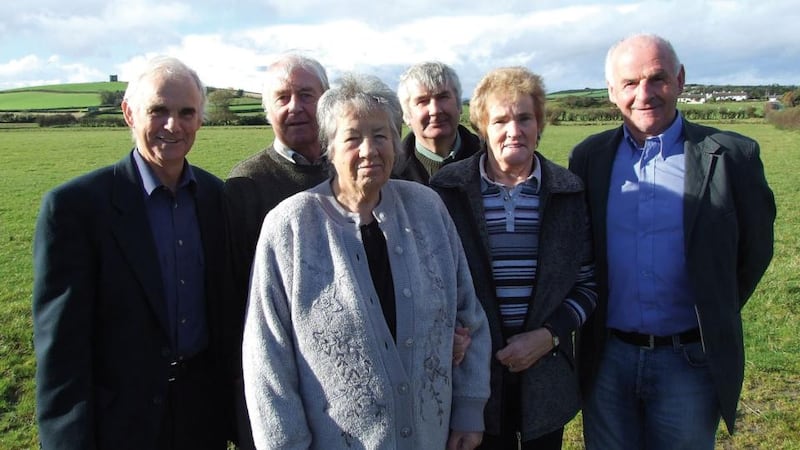
After “decades of neglect and indeed misrepresentation”, the editors of this impressive volume, Dr Seán Beattie and Dr Jim MacLaughlin, are determined to put Donegal “on the map of contemporary Ireland”.
The record needs to be set straight, because Donegal has been frequently overlooked. As a postpartition sore thumb on the body of the emerging Republic, Donegal had scant attention from the pillars of the new state. Neither CIÉ nor RTÉ television ventured far into the northwest before the late 1970s. Much of the county was left to the erratic mercies of the Swilly Bus Service and to six-counties television, whose weather maps went mysteriously blank west of Strabane. To travel to Dublin, most Donegal people must cross the Border twice.
It all reinforced a centuries-old sense of detachment and defiance that is still evident in some of these chapters. Frank Mathew is quoted here describing Donegal people over a century ago as “perpetual strangers” at home in a county “ramparted from the rest of the country . . . a fastness in which they remain stubbornly rooted”.


On the rugged western shore you must hold fast because, as a Rosses man says here to Dónal Mac Polín, “seaweed could hardly stick to the rocks”. Detachment persists, Donegal remains far removed from Dublin or London and is now even more remote from the power brokers in Berlin.
The word “atlas” derives from a practice of 17th-century publishers: they often used a representation of Atlas supporting the heavens as a frontispiece in early folios of maps. “Atlas” in the terms of this publication goes well beyond maps: it is a conspectus, or general survey, of its subject in the sense of an 18th-century encyclopaedia.
This is a passionate, accessible book of reference and compendium of a vast body of knowledge about Donegal. Not since the days of John O’Donovan, Thomas Larcom and their Ordnance Survey has anything quite this ambitious been undertaken: with 50 contributors, 90 articles and more than 600 pages, this is a mammoth enterprise.
MacLaughlin and Beattie deserve plaudits for their scholarship and for their fortitude. Not content with editorship, they have also written about a fifth of the work.
This atlas is pioneering not only in its subject matter but also in its choice of contributors. Local scholars are given parity of esteem with eminent academics. It’s a refreshing blend that must have posed many stylistic challenges. Those have been admirably met, although the depth of research and quality of expression is, inevitably, uneven at times. There is also a degree of repetition between chapters.
This is a pioneering work too in that it emerges at a time when most potential funding agencies are, in the words of the editors, collapsing all around us. Cork University Press deserves great credit for its enterprise and for the book’s remarkable production values.
Tip O’Neill, the late former speaker of the US House of Representatives, famously said that all politics is local. This work demonstrates that most of what we value in life is local too. Here a focus on a specific county allows the reader to come to terms with geology, archaeology, climate, natural history, marine life, social history, diet, art, literature, architecture, music, sport and political history. Here, too, are lively and sometimes esoteric essays that range from profiles of Daniel O’Donnell and Derek Hill to Donegal poitín, from vernacular boats to Donegal railways, lacemaking and even “Donegal’s role in the demise of the American Indian”.
I’m delighted to see Peader O’Donnell’s moving polemical account of the Árainn Mhór disaster of 1935 included here. Alongside it stands a haunting photograph of the island funeral of some of the 19 returning migrant labourers who lost their lives when their boat hit rocks.
Among scores of beautifully chosen illustrations, one other photograph stands out for me. It’s a modern press snap of six people standing in the shadow of Burt Castle. Each of their mothers came from the west to be hired and then stayed to marry local men. New lives for them began not in Birmingham or Boston but in the sweet soil of east Donegal. Romance overcame even the harsh economics of the hiring fair.
Warp and weft
To do justice in a review to the multitude of topics explored in this book is daunting. A couple of threads can, however, be pulled out of the warp and weft of this extensive narrative to illustrate some of its themes.
The first is that, geologically, Donegal has been described as “Scotland on a smaller scale”, and that kinship with Scotland is a thread that runs through these chapters. Long before Colm Cille headed to Iona there was a constant exchange of population with the neighbours in the east. Tomás G Ó Canann describes how in the late 13th century Galloglass warrior clans came to support the feuding O’Donnell chieftains. If, as argued here by Carol Baraniuk and Frank Ferguson, the Presbyterian church of the 19th century “was effectively a proto-state within a state for many Irish Presbyterians”, then their spiritual wellspring was the Scotland of John Knox transferred to east Donegal.
Seasonal migration to Scotland sustained western communities that would have been otherwise destitute. Róise Ní Bhaoill makes a fascinating claim here that such migration also sustained the Irish language. The population of the Rosses, in the far west, actually grew by 14 per cent between 1841 and 1911 while that of the county as a whole fell by 43 per cent. Where migration was well established, emigration was much less common. Family and community networks were maintained and hence so was the language. Inaccessibility was also an advantage, as, according to one of Ní Bhaoill’s sources, “English quickly follows the good road”.
Alexander Lecky’s observation that there were two Donegals – an outer, Catholic, Gaelic, mountainous one and an inner, Protestant, level and fertile one – is quoted more than once in this atlas. In 1880 it was seen simply as the east-west divide between comfort and misery.
That stark division has been blurred by time, but the Scottish connection remains strong. Many in east Donegal still speak in a Scottish dialect, confident that, as a speaker of Yiddish once said, a language is simply a dialect with an army and navy. Also, as is made clear here by Caoimhín Mac Aoidh, Donegal’s fiddle music and traditional dances are infused with Scottish influence. And few doubt Joseph Bradley’s contention that Celtic Football Club, in Glasgow, is at root a Donegal team.
Revolution from above
A second, related thread in the tapestry of this narrative is the impact of a 19th-century "revolution from above", when "improving" landlords brought an end to open-field or rundale farming and replaced it with isolated smallholdings that could yield more rent. Prof James Anderson of Queen's University Belfast argues that in this enforced change we see "the antipathy of individualistic capitalist landlords towards what was basically a pre-capitalist communal form of production."
Clachans were at the centre of the infield, which was cultivated co-operatively in summer; the outfield, or booley, was used for grazing from May to November. All this was brushed aside as carts, ploughs and hawthorn saplings were imported to herald a new order. The hawthorns remain, but these hedges now enclose a very different Donegal.
Widespread emigration became the norm as these smallholdings failed to sustain entire families. Kavanagh's epic poem The Great Hunger captures a mortal fear of subdivision and hence of marriage. A single son held on grimly to the stony acres while the rest had to find a new life far away. Jim MacLaughlin argues that there was a recurrent "societal imperative that drove whole sections of the county's people abroad since all that confronted them at home was aimless poverty, menial work and low or non-existent wages. They were indeed 'children of the dead end'."
Donegal became an “emigrant nursery”; the brightest and the best “went away” to provide cheap labour for the English-speaking world. Migration matched the patterns of the ancient farming year, but emigration was permanent. According to a striking judgment quoted here from 1914, no doubt inspired by the eugenics movement, there was a “perpetual survival of the unfittest” and a “steady debasement of the human currency of Donegal.”
MacLaughlin argues that the conservative and the cautious were left behind at home. In that context “Donegal’s middling tenantry and petty bourgeoisie acquired status and power in the run up to political independence.” Emigration ensured they held on to that power.
Now, tragically, that cycle is being repeated. The lifeblood of Donegal is once again “going away” to boost the economy of distant countries.
One of the delights of this book is the bold claims of some of its authors. One such is Brian Lacey’s assertion that, thanks to Colm Cille’s Iona Chronicle, “the history of Ireland was arguably a Donegal invention”.
The authors of this book have set a new standard for local studies in Ireland. Together they have created a vast educational resource, which I trust will also have a virtual, renewable online manifestation, and provide priceless reference material for generations to come.
Patrick Loughrey is warden of Goldsmiths, University of London, and a former controller of BBC Northern Ireland. He is from Co Donegal










